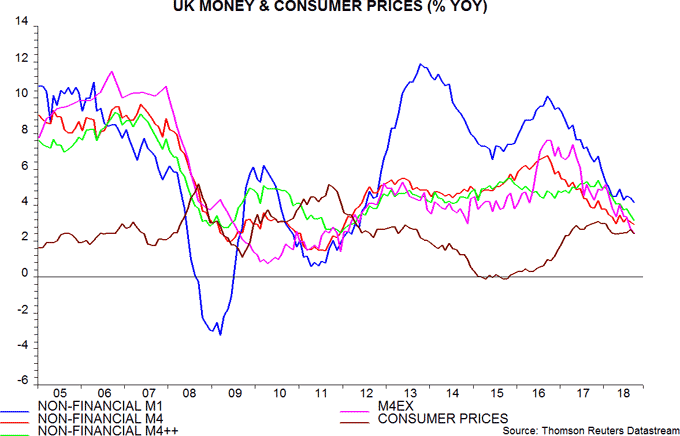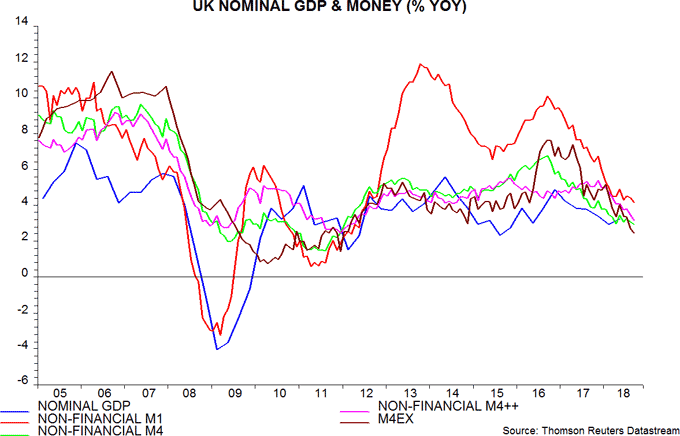
Janus Henderson: MPC ignoring weak money trends
Brexit uncertainty may at least have prevented the Bank of England from making another policy mistake.
05.11.2018 | 09:35 Uhr
Today’s MPC communications suggest that, absent the Brexit cloud overhanging economic prospects, the Committee would have hiked rates again to counter perceived inflationary risks from a tight labour market. Weak money trends, however, argue that policy settings are already restrictive and the next move may have to be to ease not tighten.
Annual growth rates of four different money measures fell further in September, to the lowest levels since 2012 – see first chart*. Consumer price inflation has also declined this year but by much less, so real money growth has slowed significantly.

The second chart compares annual growth of nominal GDP with that of the four money measures. The monetary slowdown since 2016 has been reflected in a slide in nominal GDP growth, ignoring a small recovery in the second quarter of 2018 (which could be revised away). With money trends still weakening, nominal GDP growth may move down further towards 2% in early 2019. The MPC needs to achieve average growth of about 3.5% per annum to meet the 2% inflation target, assuming potential output expansion of about 1.5% pa.

The monetary slowdown partly reflects policy tightening – the November 2017 / August 2018 rate hikes, closure of the term funding scheme in February 2018 and instructions to banks to conserve capital because of Brexit risk. In addition, Brexit uncertainty and slower-than-expected global growth have dampened business / consumer confidence and spending plans, resulting in a reduction in credit demand and lower desired holdings of transactions money.
Facing possibly significant Brexit-related volatility over coming months, the MPC could do worse than steer policy on the basis of monetary trends. That means eschewing any consideration of another rate hike until money growth recovers, and moving to an easing bias if trends continue to weaken.
*Non-financial = held by the household sector and private non-financial corporations. M1 = narrow money = sterling notes / coin and sight deposits. M4 = broad money = M1 plus sterling time deposits, repos and bank securities of up to five years’ original maturity. M4++ = non-official expanded measure = M4 plus foreign currency deposits, national savings and retail sales of unit trusts and OEICs. M4ex = Bank of England’s preferred broad money measure = non-financial M4 plus M4 holdings of financial corporations, excluding intermediaries.




Diesen Beitrag teilen: